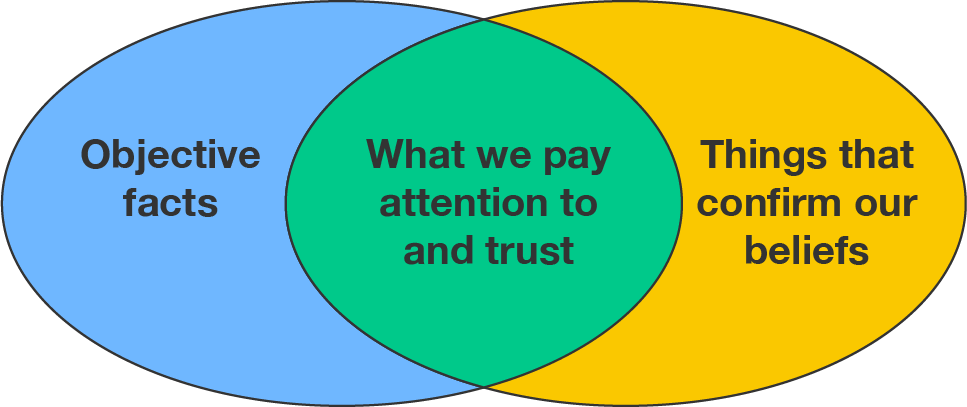Managing social media responsibly
Explore these skills in a real world context.
The SIFT method can help you to critically evaluate the validity and reliability of information before sharing it with your online community. Let's explore how it can be used to evaluate information from social media.
Social media is one way that people learn what’s happening in the world. But anyone can share just about anything online. Before you repost or retweet, how can you be sure that what you’re reading isn’t fake news?
When we see or hear information that aligns with a belief we already hold, we generally don’t question it.
To illustrate, if you think a certain political party is plagued by corruption, you’re likely to believe a post saying one of their members was involved in a scandal.

The SIFT method is a set of four simple steps to help you determine whether something you are reading online, or anywhere, is trustworthy.
SIFT stands for
These steps are all about understanding the source and context of the information, so that you can decide before you even read it whether it is valid and reliable.
 |
Stop This first step reminds you to pause and consider whether you know and trust the source of the information you’re reading. If you have any doubts, continue with the next steps. |
 |
Investigate the source
Before you dig into an idea you find online, it’s helpful to know where it’s coming from. If you’re not familiar with a website, look it up on Wikipedia for an overview. Knowing the expertise, perspective and agenda of the source can help you to better analyse and interpret the information provided. |
 |
Find better coverage To determine whether a claim is true, find more information about the topic from trusted sources. You can try to find the best, most authoritative source on a topic, or you can read multiple sources to see how different publications treat a claim you are investigating. |
 |
Trace claims, quotes and media back to their original context Some people or organisations might not provide the whole picture of a topic. Quotes can be taken out of context, claims distorted, and media altered to support a particular perspective. Tracing these back to the original source allows you to see the original context and decide if the ideas have been presented accurately. |
Read the content shared below and consider whether the information is factual and trustworthy. Use the SIFT method to help with your analysis.
This resource has been adapted from: Check, Please! Authored by: Michael Caulfield. License: CC BY: Attribution 4.0.